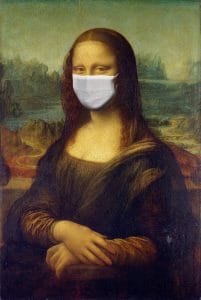Because of the atrocities that were carried out under the Third Reich, there was a global awareness of the dignity of the human person especially when it comes to performing medical experiments. Experimentation today is mostly benign because of the fact that the war crime tribunal of Nuremberg articulated 10 standards by which researchers must conform when performing medical experiments on human subjects. These standards have now been adopted throughout the world and form the basis of our clinical trials system. The first of these standards was that “[T]he voluntary consent of the human subject is absolutely essential. This means that the person involved should have legal capacity to give consent; should be so situated as to be able to exercise free power of choice, without the intervention of any element of force, fraud, deceit, duress, overreaching, or other ulterior form of constraint or coercion; and should have sufficient knowledge and comprehension of the elements of the subject matter involved as to enable him to make an understanding and enlightened decision.” The Principle of Free and Informed Consent as it has come to be known has been included in nearly every code of medical ethics throughout the world. It is meant to protect human beings from a medical totalitarianism by which people are treated as guinea pigs. Tyrants always try to control the population and, thanks to medical technology, the temptation to chemically control them is greater than it was even 75 years ago.
The Principle of Free and Informed Consent
Although this principle has been articulated in secular code only recently, the Magisterium of the Church has taught this principle throughout the history of the Church. Her teaching has been summarized succinctly in the Charter for Health Care Workers that was promulgated in 1994 by the Pontifical Council for Pastoral Assistance to Health Care Workers
“To intervene medically, the health care worker should have the express or tacit consent of the patient. In fact, he ‘does not have a separate and independent right in relation to the patient. In general, he can act only if the patient explicitly or implicitly authorizes him.’…Besides the medical relationship there is a human one: dialogic, non-objective. The patient …‘should be called upon to share in the improvement of his health and in becoming cured. He should be given the opportunity of personally choosing, and not be made to submit to the decisions and choices of others.’ So that the choice may be made with full awareness and freedom, the patient should be given a precise idea of his illness and the therapeutic possibilities, with the risks, the problems and the consequences that they entail. This means that the patient should be asked for an informed consent.”
Charter for Health Care Workers, 72
While the principle of free and informed consent is fairly straightforward, in practice it can be difficult to secure fully informed consent. The response to a given medical treatment varies greatly from individual to individual. This means that it is often impossible to explain to someone all of the possible complications involved in a given treatment modality. Some complications may be extremely remote and a listing of all possible complications may only serve to frighten them away from participation. At other times, not all of the related hazards are known.
Free consent is somewhat easier to achieve in practice because it is essentially consists in a negative. Any sort of coercion ought to be completely rejected. Because the goal of the research study is therapeutic in nature, this therapeutic benefit should be sufficient “payment” for their participation. They must remain free to determine whether the personal benefits outweigh the burdens. Likewise, there must be no “outside” coercion from either public or private institutions that threaten the person in some way.
For this reason, the principle of free and informed consent should really be interpreted as requiring “reasonably” free and “adequately” informed consent as governed by the a “Medical Golden Rule.” The US Bishops in their Ethical and Religious Directives for Catholic Health Care Services stated the principle in this way: “Free and informed consent requires that the person or the person’s surrogate receive all reasonable information about the essential nature of the proposed treatment and its benefits; its risks, side-effects, consequences and cost; and any reasonable and morally legitimate alternatives, including no treatment at all” (27).
Why the Principle Matters Today
What makes this principle particularly important is that we are in the midst of the largest medical experiment in human history. No matter where you stand on the Covid vaccine—its safety or its effectiveness—you should be appalled at the gross violation of this principle.
First of all, the vaccines are advertised as “safe and effective”. They may yet prove to be so, but at this point to make such a claim is really unsubstantiated. Before such a claim can be made, there must be thorough risk-benefit analysis done. Other than the J&J vaccine, this has not occurred. They also have not been forthcoming with the data. Why, for example, when we are concerned about getting people vaccinated, would the CDC not report hospitalization and death data comparing the vaccinated and unvaccinated? It gives the appearance of hiding something. In fact, even if they aren’t hiding anything, it does gives credence to those who are concerned about a conspiracy.
What about the rates of adverse events? To say they are rare lacks a precision that they can readily quantify. This is vitally important when different subpopulations have greatly different risks from Covid. When, for example a 20-year-old already has a rare chance of suffering death or long term effects from the virus itself, why should they take a vaccine that also has rare side effects? How can someone compare them without anything more than the vague designation of rare? To appeal to public health is a two-edged sword as there is also a drain on public health should the person suffer one of said rare side effects. Public health is far more than just the elimination of communicable diseases and people are far more than incubators.

The point is that all of this and more makes it practically impossible to give informed consent. But more disconcerting is the growing attacks on free consent. The amount of coercion has reached a fever pitch. Federal agencies, universities both private and public and private companies have all instituted mandatory vaccination. Public officials have offered to pay people to be vaccinated and even have offered a lottery system that rewards one lucky winner a million dollars. All of these forms are coercion are morally reprehensible and should be of grave concern to us all. Mandatory vaccines today, mandatory sterilizations for the “public good” tomorrow. Once the principle of free and informed consent is no longer recognized, there is nothing to keep it from becoming a therapeutic tyranny.
The Covid vaccine might prove to be a good thing (that is why we are performing an experiment), but public health is not an element of the common good. It is essentially a private good because not everyone shares in it equally. Elements of the common good, as the name suggests, are shared equally among all the members of society. Freedom of conscience (properly understood). on the other hand, is part of the common good. To coerce vaccination, whether it is “safe and effective” or not is ultimately harmful to the common good and therefore must be opposed by even those who are personally in favor of vaccination.


